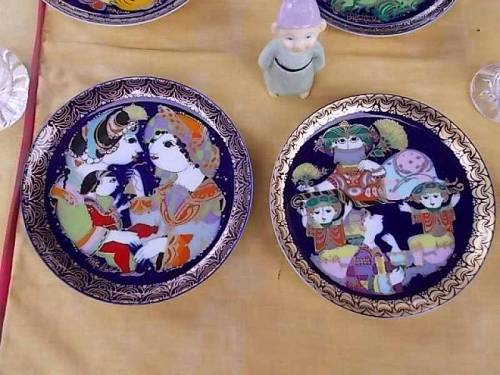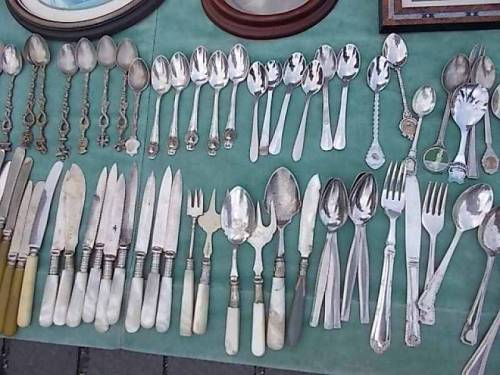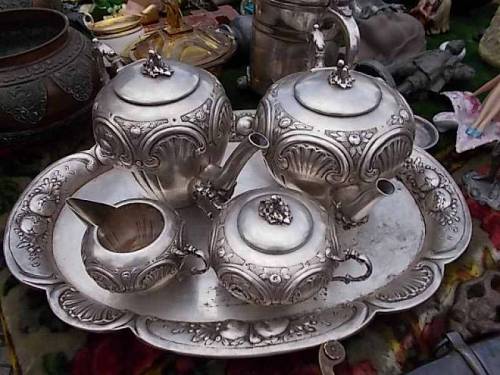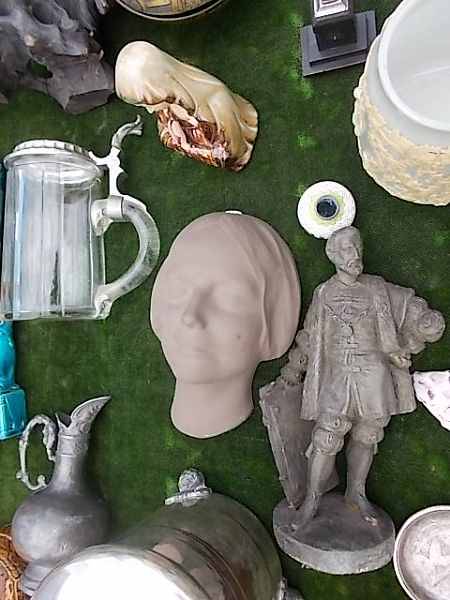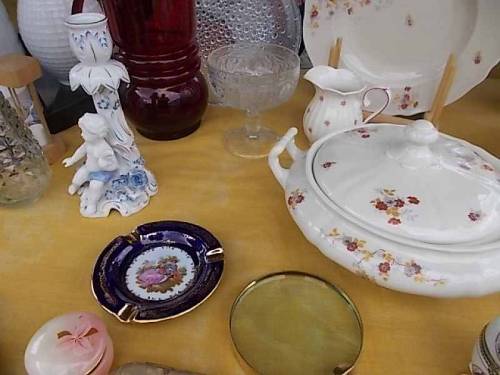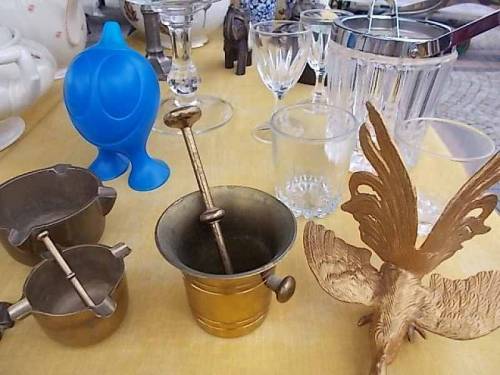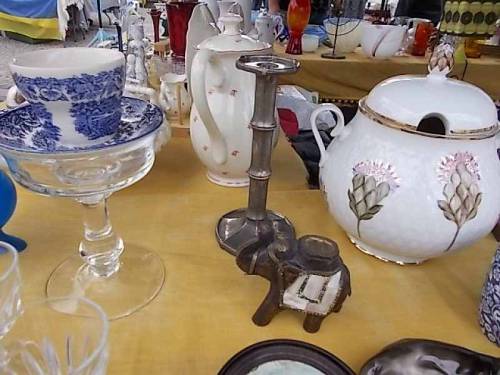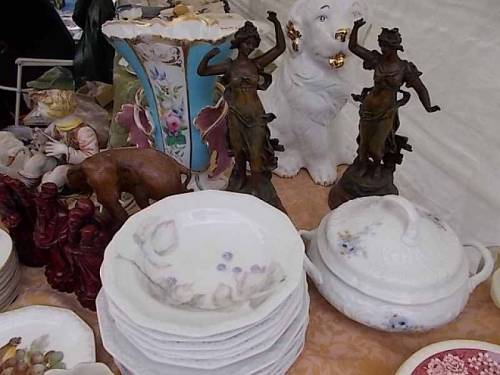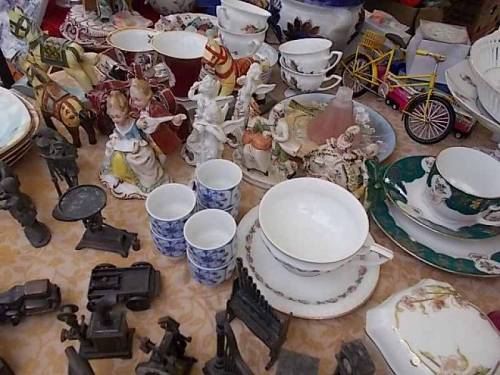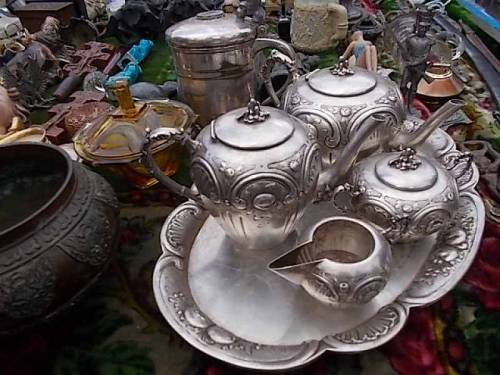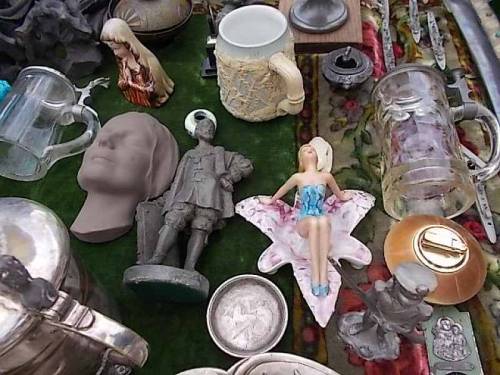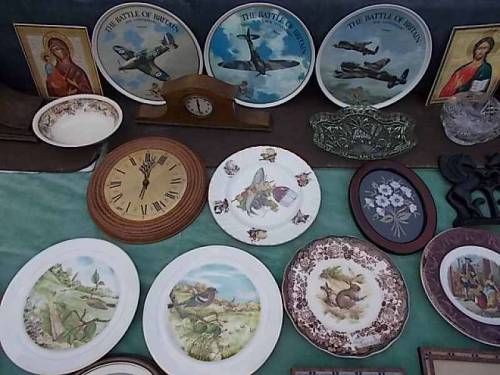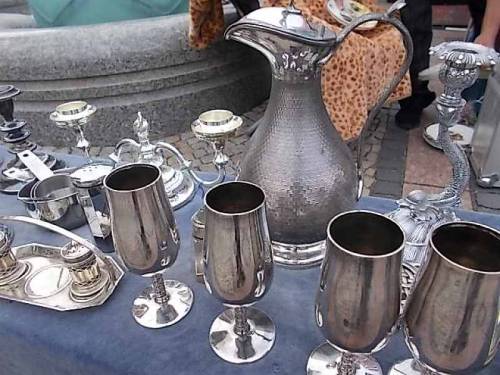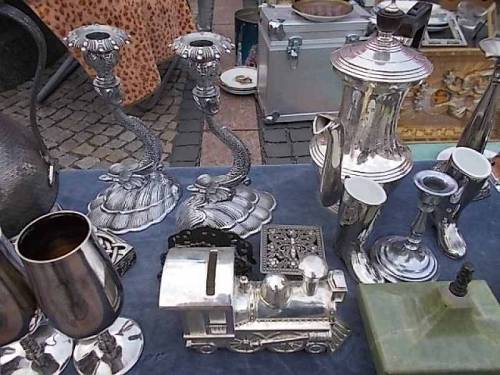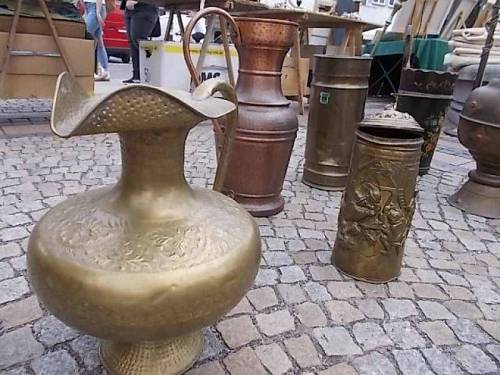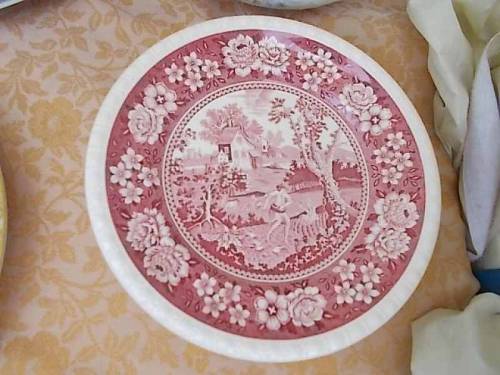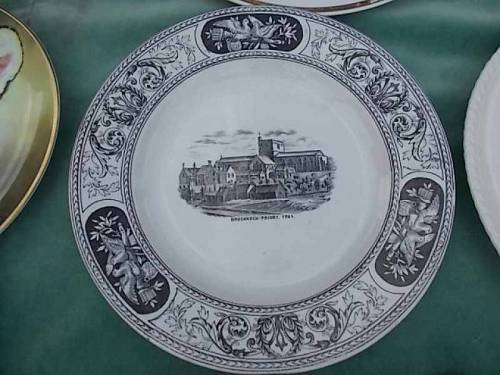#antiquities


“Demeter stands holding a royal sceptre and sheaf of wheat. She wears a crown upon her head. Beside her stands Persephone holding an Eleusinian torch and pouring libations from a cup.” Persephone & Demeter Lekythos 450 - 425 BCE. Current location: Athens National Archaeological Museum.
“Ceres delights in peace: pray, you farmers,
Pray for endless peace and a peace-loving leader.
Honour the Goddess with wheat, and dancing salt grains,
And grains of incense offered on the ancient hearths,
And if there’s no incense, burn your resinous torches”
-Ovid, Fasti: Book 4, April 12, The Games of Ceres
https://paganimagevault.blogspot.com/2019/11/persephone-demeter-lekythos-450-425-bce.html

Demeter - Unknown date
“The Trinacrian land (Sicily) took its name from its shape:
It runs out in three rocky capes to the vast ocean.
It’s a place dear to Ceres. She owns, there, many cities,
Among them fertile Enna, with its well-ploughed soul.
Cool Arethusa gathered together the mothers of the Gods:
And the yellow-haired Goddess came to the sacred feast.
Her daughter, Persephone, attended by girls, as ever,
Wandered barefoot through Enna’s meadows.”
-Ovid, Fasti: Book 4, April 12, The Games of Ceres
https://paganimagevault.blogspot.com/2019/11/demeter-unknown-date.html

A bust of Demeter, here identified with the Egyptian Goddess Isis. Unknown Egyptian artist, 1st cent. CE. Now in the Louvre. Photo credit: Sailko.
“Then, at last, Ceres recovered her countenance and spirits,
And set garlands, woven from ears of corn, on her hair:
And the tardy fields delivered a copious harvest,
And the threshing-floor barely held the heaped sheaves.”
-Ovid, Fasti: Book 4, April 12, The Games of Ceres
https://paganimagevault.blogspot.com/2020/01/isis-demeter-1st-c-ce.html










Dionysos with maenads, satyrs, and athletes by The Kleophrades Painter 500 BCE
“Difficulties are things that show what men are. For the future, in case of any difficulty, remember, that God, like a gymnastic trainer, has pitted you against a rough antagonist. For what end? That you may be an Olympic conqueror; and this cannot be without toil. No man, in my opinion, has a more profitable difficulty on his hands than you have; provided you will but use it, as an athletic champion uses his antagonist.
Suppose we were to send you as a scout to Rome. But no one ever sends a timorous scout, who, when he only hears a noise, or sees a shadow, runs back frightened, and says, “The enemy is at hand.” So now, if you should come and tell us: “Things are in a fearful way at Rome; death is terrible, banishment terrible, calumny terrible, poverty terrible; run, good people, the enemy is at hand”; — we will answer: Get you gone, and prophesy for yourself; our only fault is, that we have sent such a scout. Diogenes was sent a scout before you, but he told us other tidings. He says that death is no evil, for it is nothing base; that calumny is only the noise of madmen. And what account did this spy give us of pain, of pleasure, of poverty? He says, that to be naked is better than a purple robe; to sleep upon the bare ground, the softest bed; and gives a proof of all he says by his own courage, tranquility, and freedom; and, moreover, by a healthy and robust body. “There is no enemy near,” he says. “All is profound peace.” How so, Diogenes? “Look upon me,” he says. “Am I hurt? Am I wounded? Have I run away from any one?” This is a scout worth having. But you come, and tell us one thing after another. Go back and look more carefully, and without fear.”
Epictetus; Carter, Elizabeth. The Complete Works of Epictetus (pp. 73-74). Lazy Raven Publishing. Kindle Edition.
More images and sources: https://paganimagevault.blogspot.com/2022/04/dionysos-with-maenads-satyrs-and.html


Echtra Fergus mac Léti facsimile copy Gaelic manuscript 11th Ct - Copy of 8th Ct text
“This medieval tale "Echtra Fergus mac Léti” (Saga of Fergus son of Léti) contains the earliest known reference to a leprechaun (8th Century). This facsimile copy is on display in Ireland’s National Leprechaun Museum.“
-taken from @nicolekearney & @leprechaun_ie on twitter
https://paganimagevault.blogspot.com/2022/03/echtra-fergus-mac-leti-facsimile-copy.html




Hieros gamos (wedding) of Zeus and Hera from the House of the Tragic Poet in Pompeii 1st C. CE
“The local myth relayed by Menodotus of Samos contains references to cult ceremonies and practices. It is believed that Admete, daughter of Eurystheus fled from Argos to Samos. To punish her for fleeing, the Argives instructed Etruscan pirates to carry the wooden Samian cult image away. However the pirate ship with the stolen cult image was unable to set off and the pirates escaped in confusion. When the Samian islanders discovered their image outside the temple they assumed it had escaped alone and bound it with rods from the Lygos tree. Thus the annual festival of Hera was called the Tonaia (binding) where the main ceremony involved participants dragging the image out of the temple and to the seashore where they would then make a great show out of searching for the statue and uncovering it for it to be purified. Varro states the statue was draped with bridal robes as ‘The annual rites of Hera are celebrated in the form of a marriage’ thus the festival sought to immitate marriage rites between Hera and Zeus. The Goddess’ birthplace is also involved in the festival where cult members wound lygos branches around themselves from the sacred tree Hera is believed to have been born under.
The remnants of fruit such as grape seeds and olive pits show us evidence of the types of fruit consumed during the festival of Hera. It was believed fruits rich in seed reflected Hera’s divinity as a great fertility Goddess.”
-taken from Warwick.ac.uk
https://paganimagevault.blogspot.com/2020/06/hieros-gamos-wedding-of-zeus-and-hera.html
May 2022 - Wroclaw, Poland - some merchandise offered for sale during flea market of antiquities.
Post link
Glass vessel (alabastron) typology. Eastern mediterranean region, 2,000 - 2,500 years ago.
J. Paul Getty Museum collections.
Post link
Byzantine teardrop pendant of blue glass in a gold bezel, dated to the 5th to 8th centuries CE. The gold chain is likely modern. Source: Timeline Auctions.
Post link











